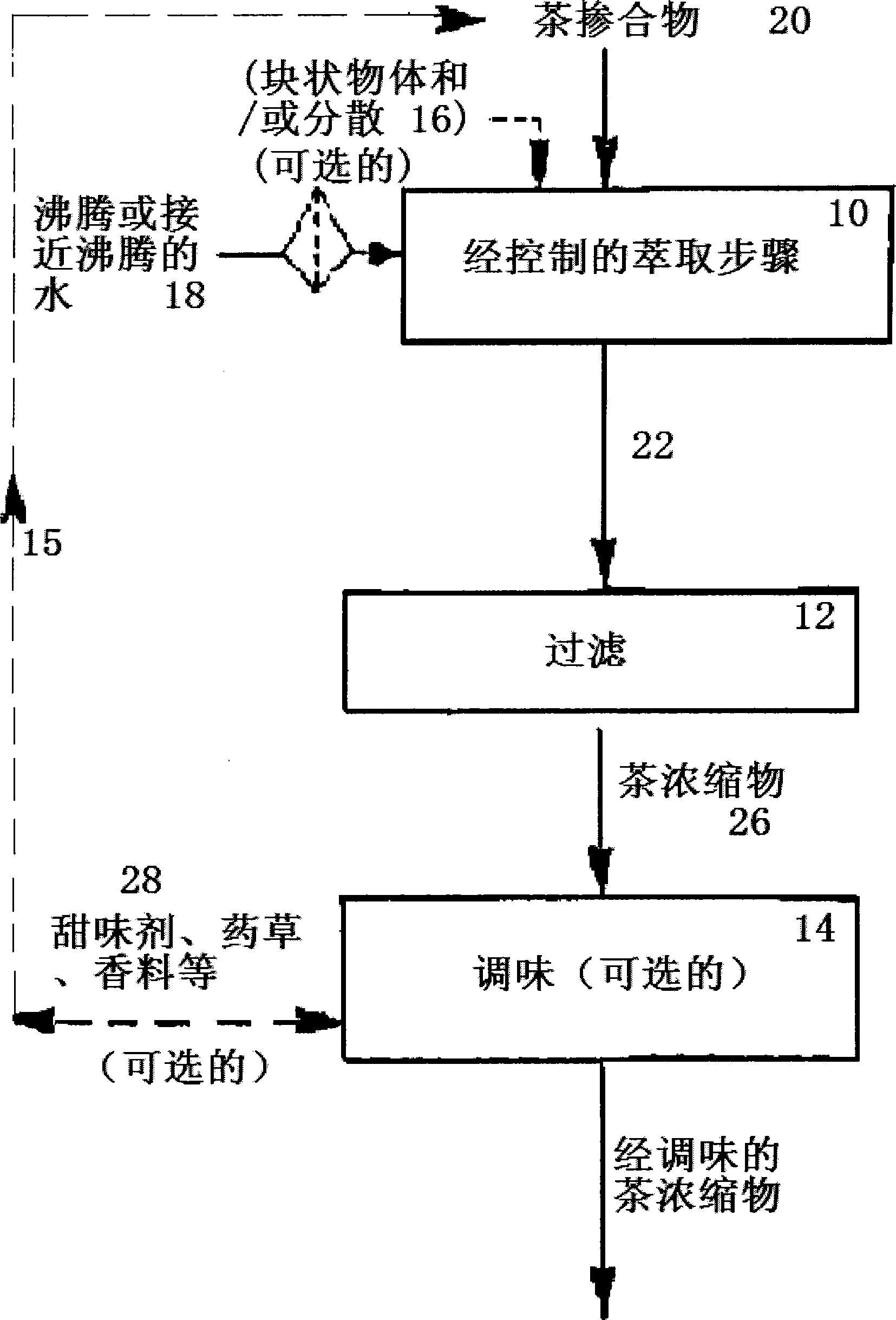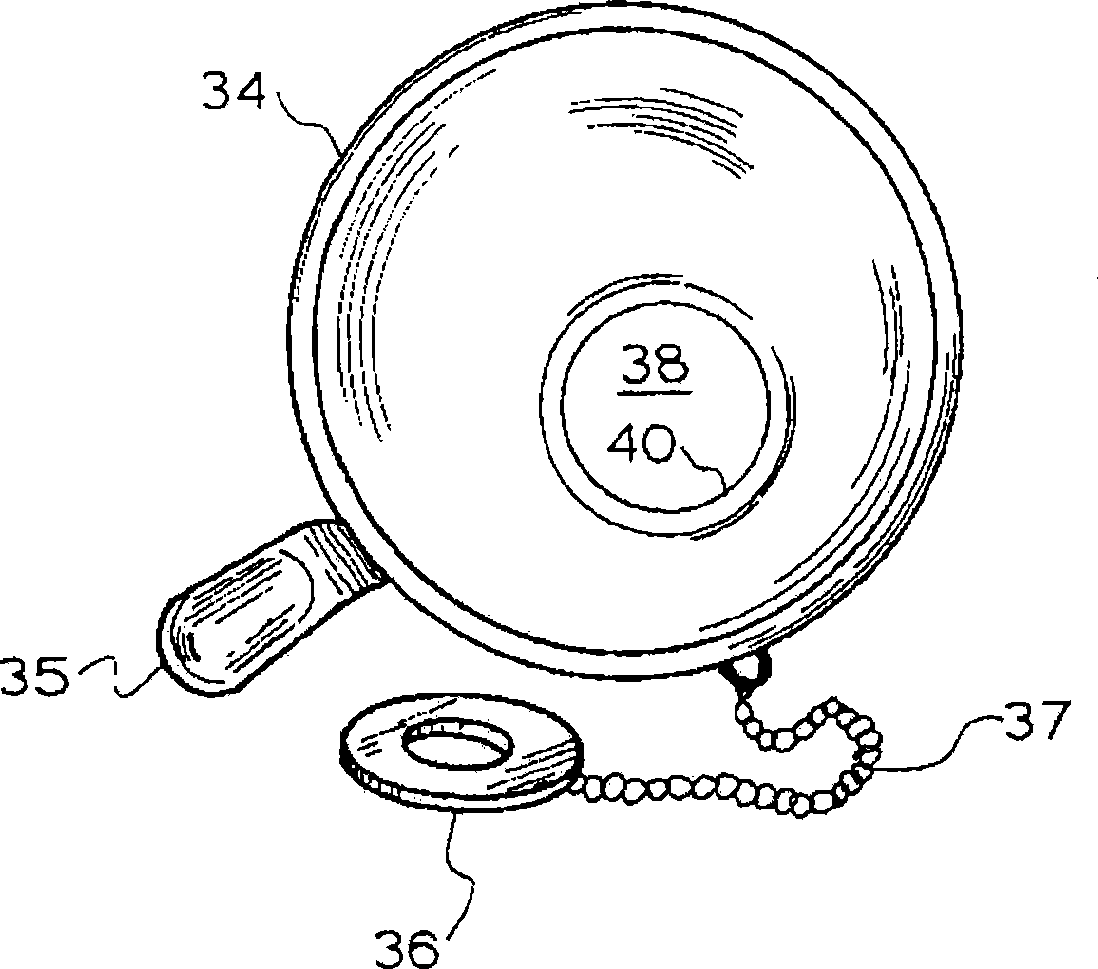Method and apparatus for making a tea concentrate
A technology of tea concentrate and concentrate, which is applied in the field of preparing tea concentrate, and can solve the problems of reducing the flow rate and the like
- Summary
- Abstract
- Description
- Claims
- Application Information
AI Technical Summary
Problems solved by technology
Method used
Image
Examples
Embodiment 1
[0098] A test was conducted using 9 grams of Pekoe tea powder with a crushed leaf size of 20-24 mesh using a Tyler series sieve (ie 20-24 holes per square inch) to determine the quality of the tea concentrate when using boiling water. The Pekoe tea powder was placed in a frustoconical filter with a very fine mesh and a restricted outlet. Use a teapot to prepare boiling water and pour about 70ml of boiling water directly on the Pekoe tea powder for 20-25 seconds of extraction time. The resulting final permeate was separated from the Pekoe tea powder by passing through a filter to provide about 30 ml of this final form of tea concentrate. The tea concentrate prepared by this method has a strong aroma without strong tannin bitterness.
Embodiment 2
[0100] Experiments were conducted using 10 grams of Pekoe tea powder with a 20-24 mesh crushed leaf size using a Tyler series sieve to determine the quality of the tea concentrate when using near boiling water from the outlet of an espresso machine. The Pekoe tea powder is first ground to reduce size and then placed in a conical filter with a very fine screen and a restricted outlet. Near-boiling water is free-flowing water from the hot water outlet of the espresso machine. Pour about 40ml of near-boiling water directly over the ground Pekoe tea leaves and allow the extraction time to be 25-30 seconds. The final permeate produced is passed through a filter, wherein the final permeate is separated from the Pekoe tea powder to provide the tea concentrate in this final form. The tea concentrate prepared by this method has a strong aroma without strong tannin bitterness.
Embodiment 3
[0102] Experiments were conducted using 10 grams of leaf blend with orange tea powder and rose petals with a crushed leaf size of 18-20 mesh using a Tyler series sieve to determine the quality of the tea concentrate when the leaf blend was used. The leaf blend was placed in a conical filter with a very fine mesh and a restricted outlet. In a similar manner to Example 1, boiling water was prepared using a teapot. About 70 ml of boiling water was poured directly onto the blend and the extraction time was 30-40 seconds. The final permeate produced was passed through a filter, wherein the final permeate was separated from the leaf blend to provide about 40 ml of tea concentrate in this final form. Likewise, the tea concentrate prepared by this method has a strong aroma without strong tannin bitterness.
PUM
 Login to View More
Login to View More Abstract
Description
Claims
Application Information
 Login to View More
Login to View More - R&D
- Intellectual Property
- Life Sciences
- Materials
- Tech Scout
- Unparalleled Data Quality
- Higher Quality Content
- 60% Fewer Hallucinations
Browse by: Latest US Patents, China's latest patents, Technical Efficacy Thesaurus, Application Domain, Technology Topic, Popular Technical Reports.
© 2025 PatSnap. All rights reserved.Legal|Privacy policy|Modern Slavery Act Transparency Statement|Sitemap|About US| Contact US: help@patsnap.com



